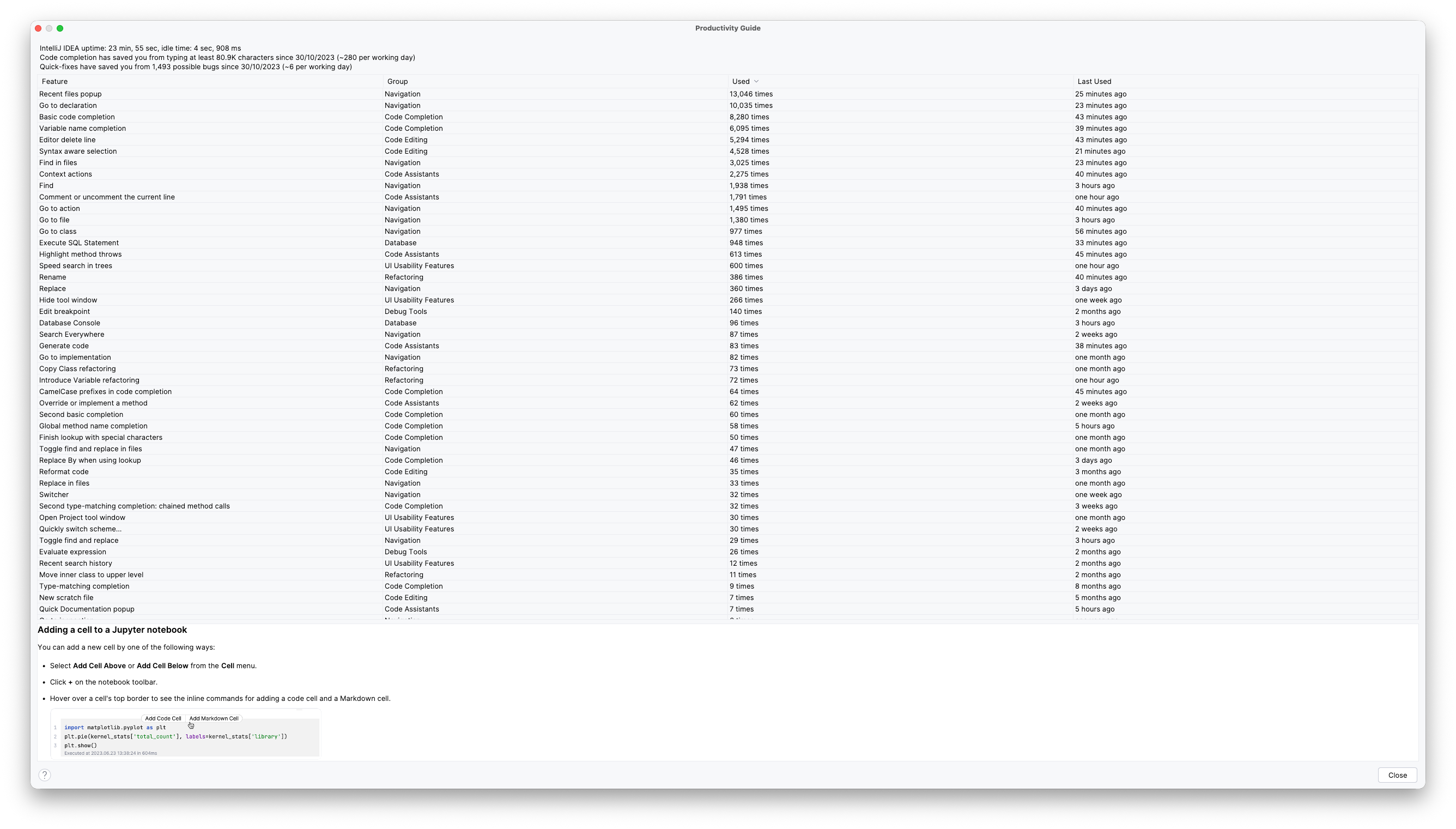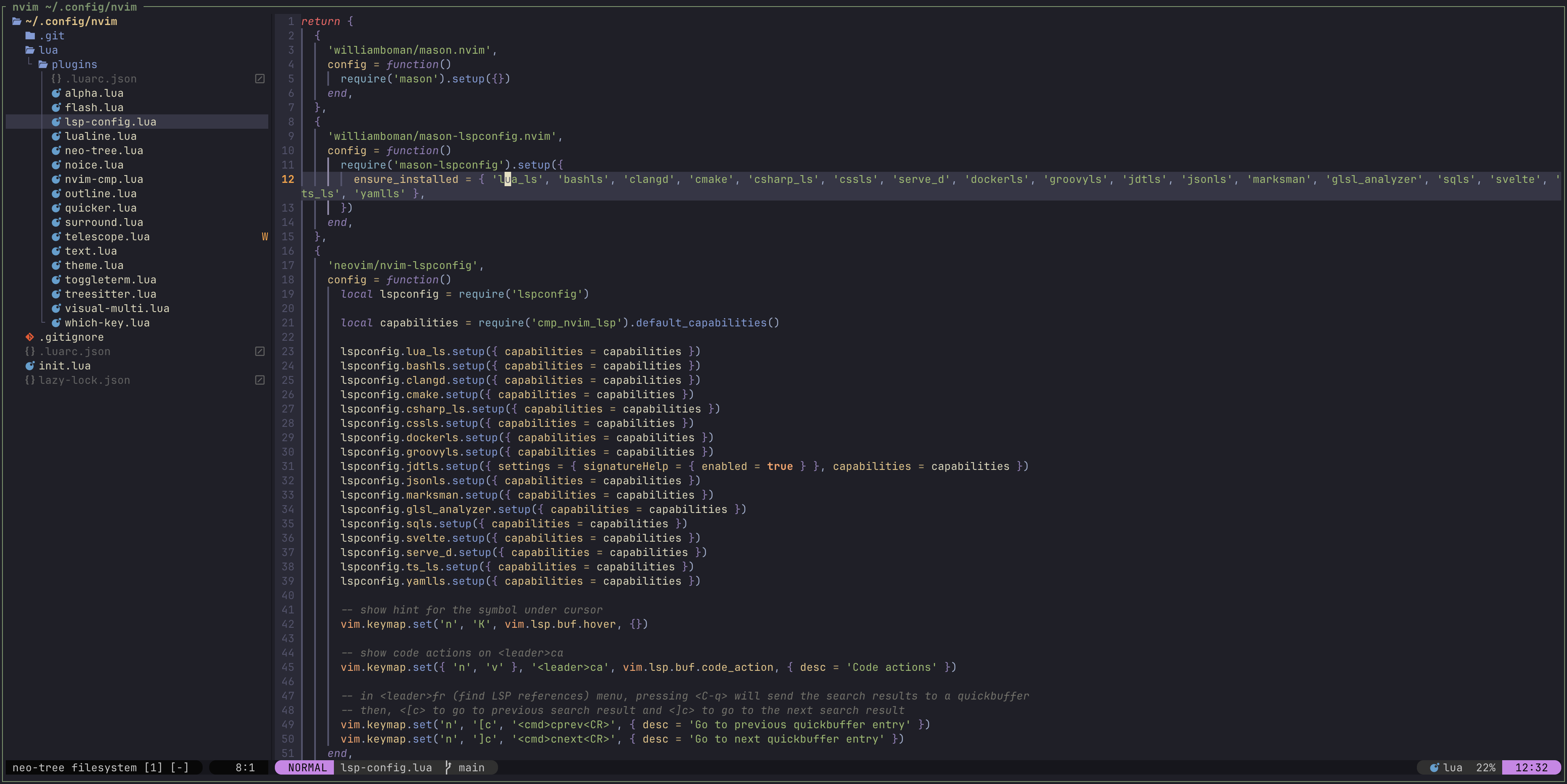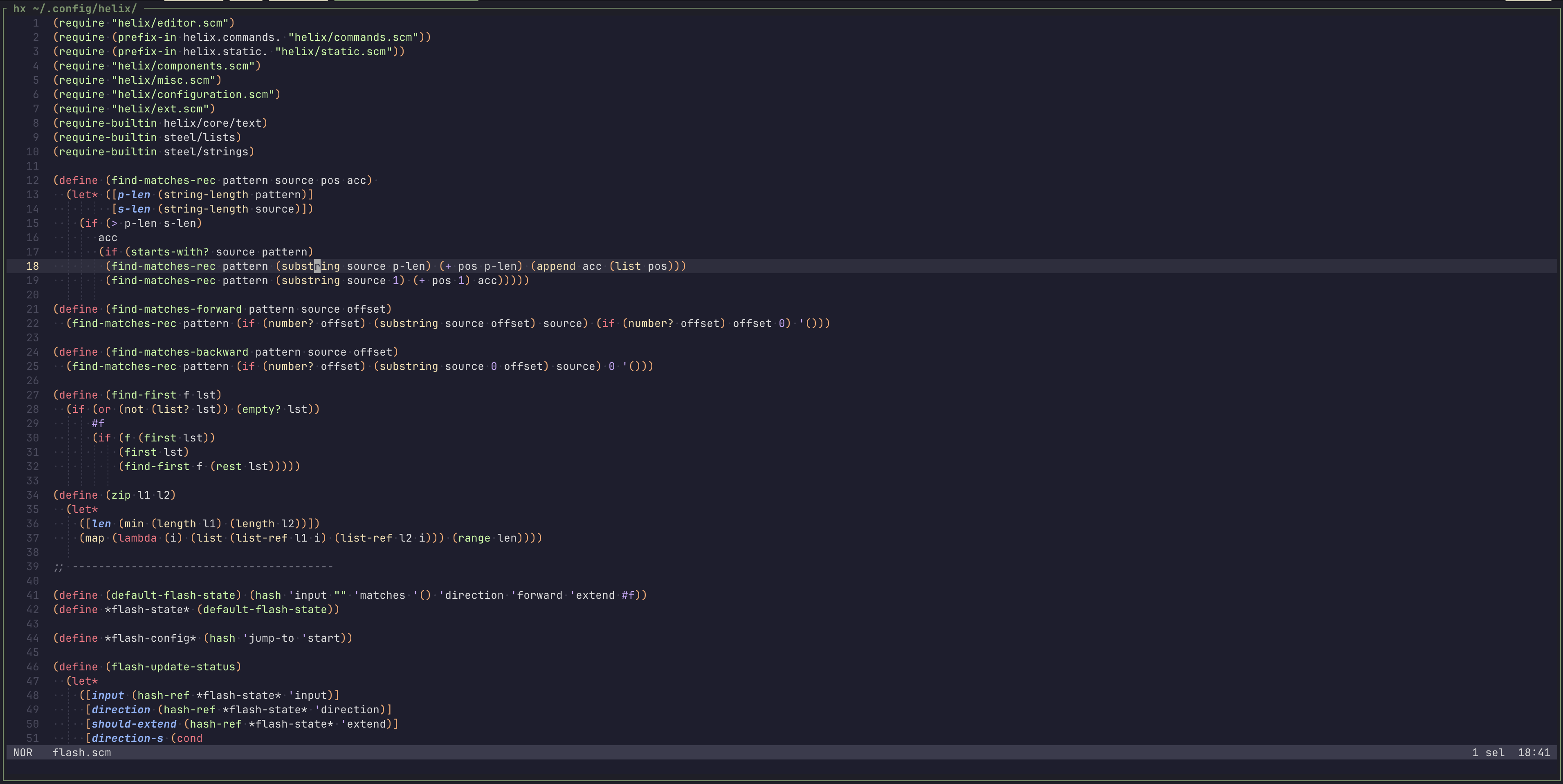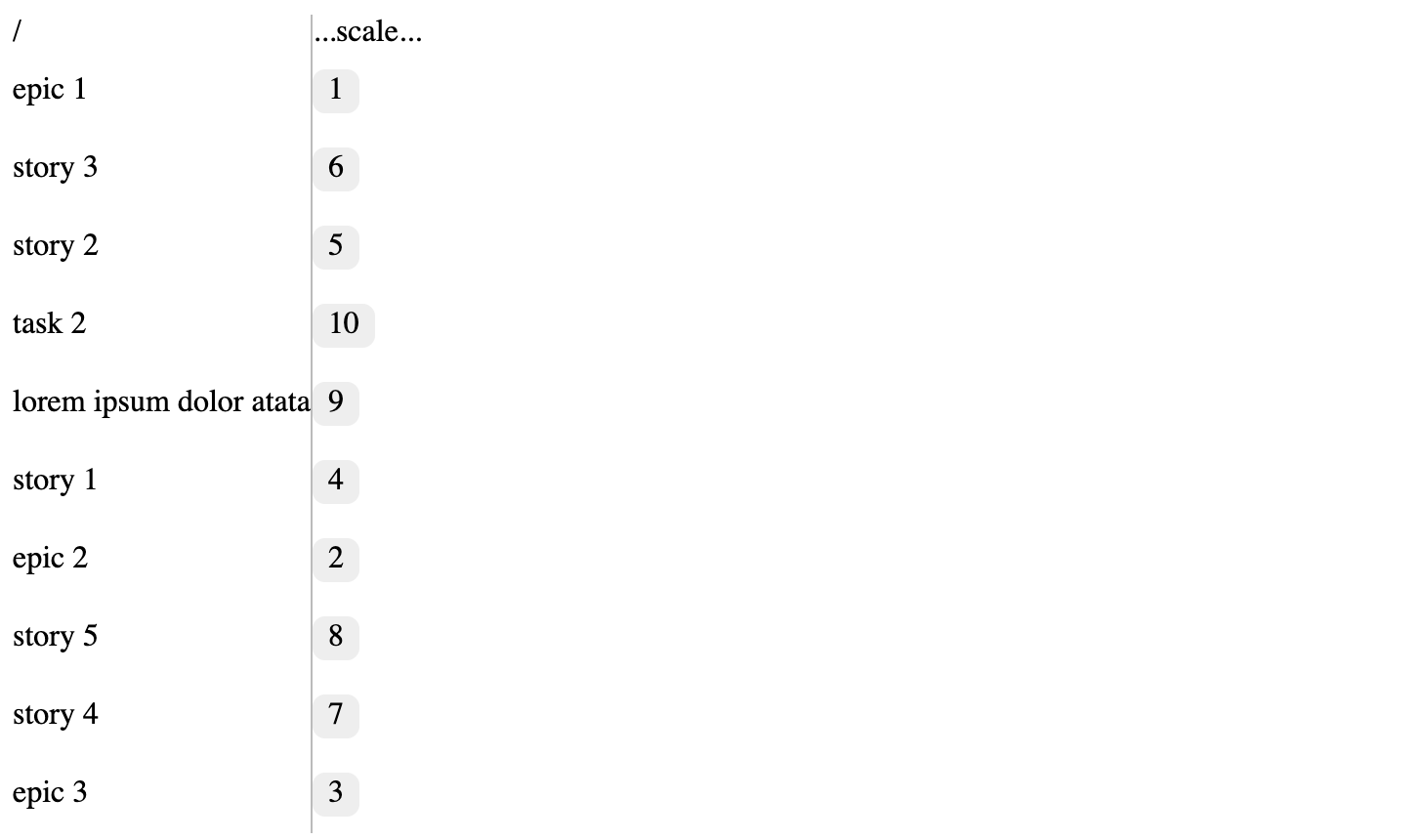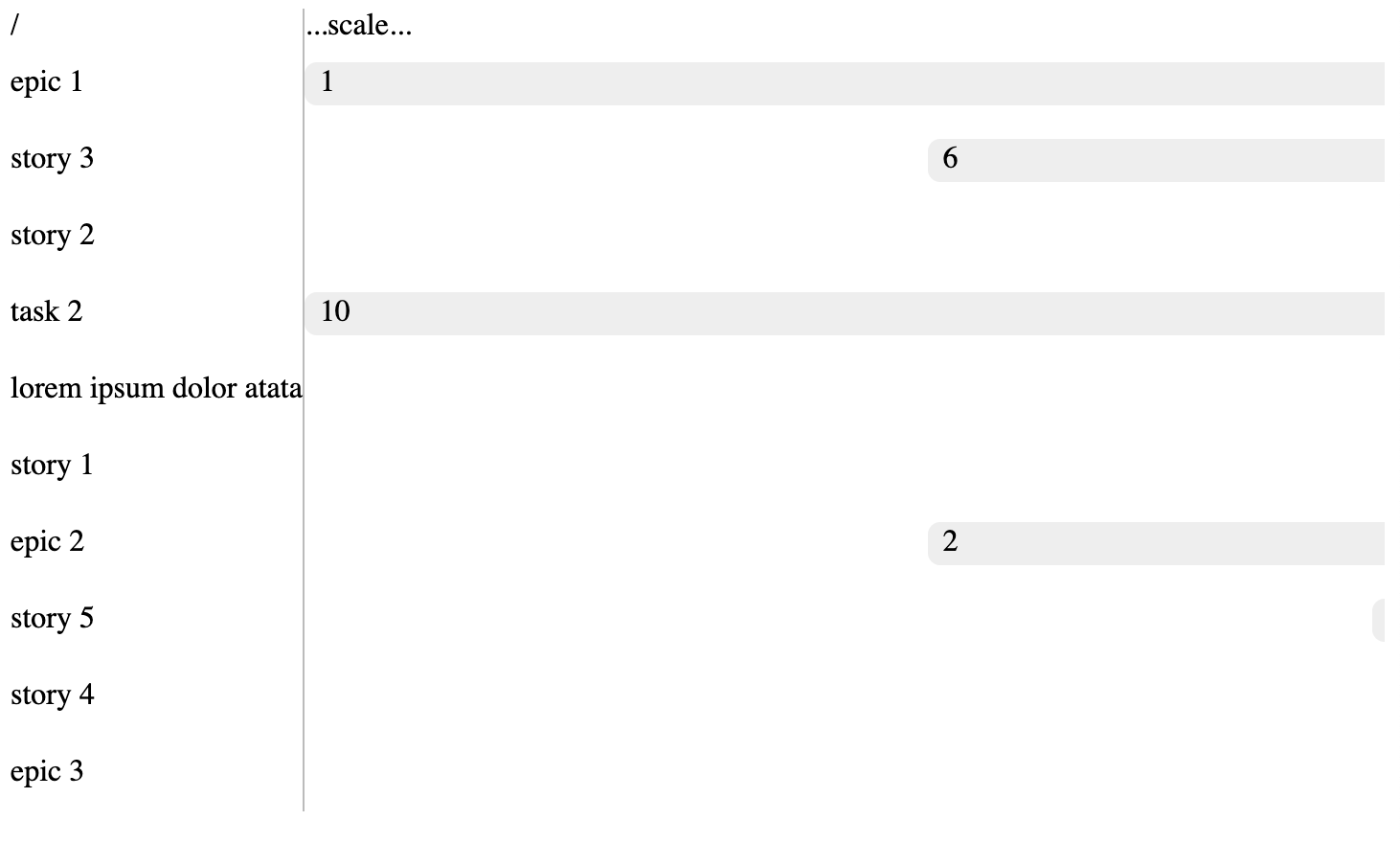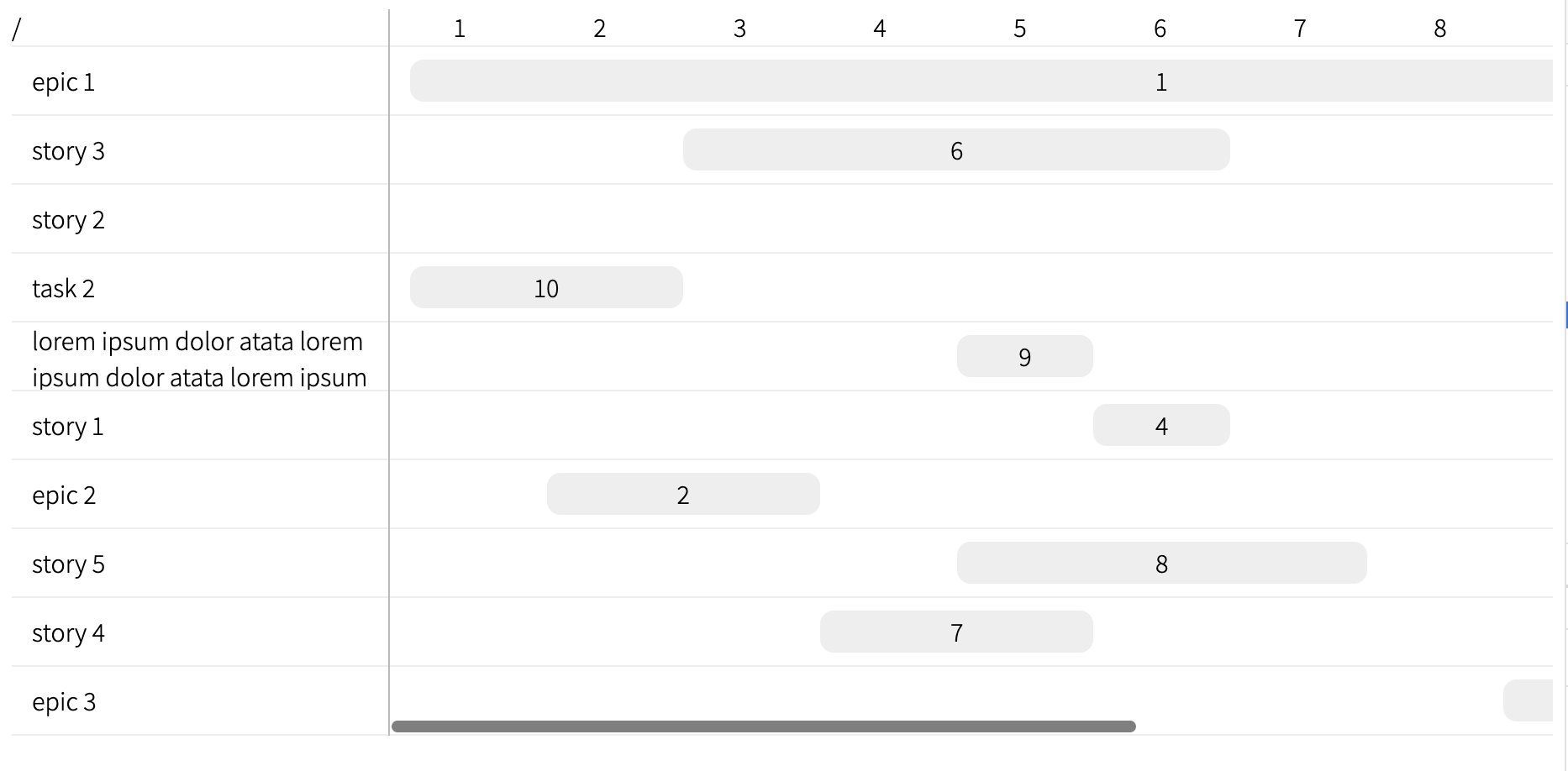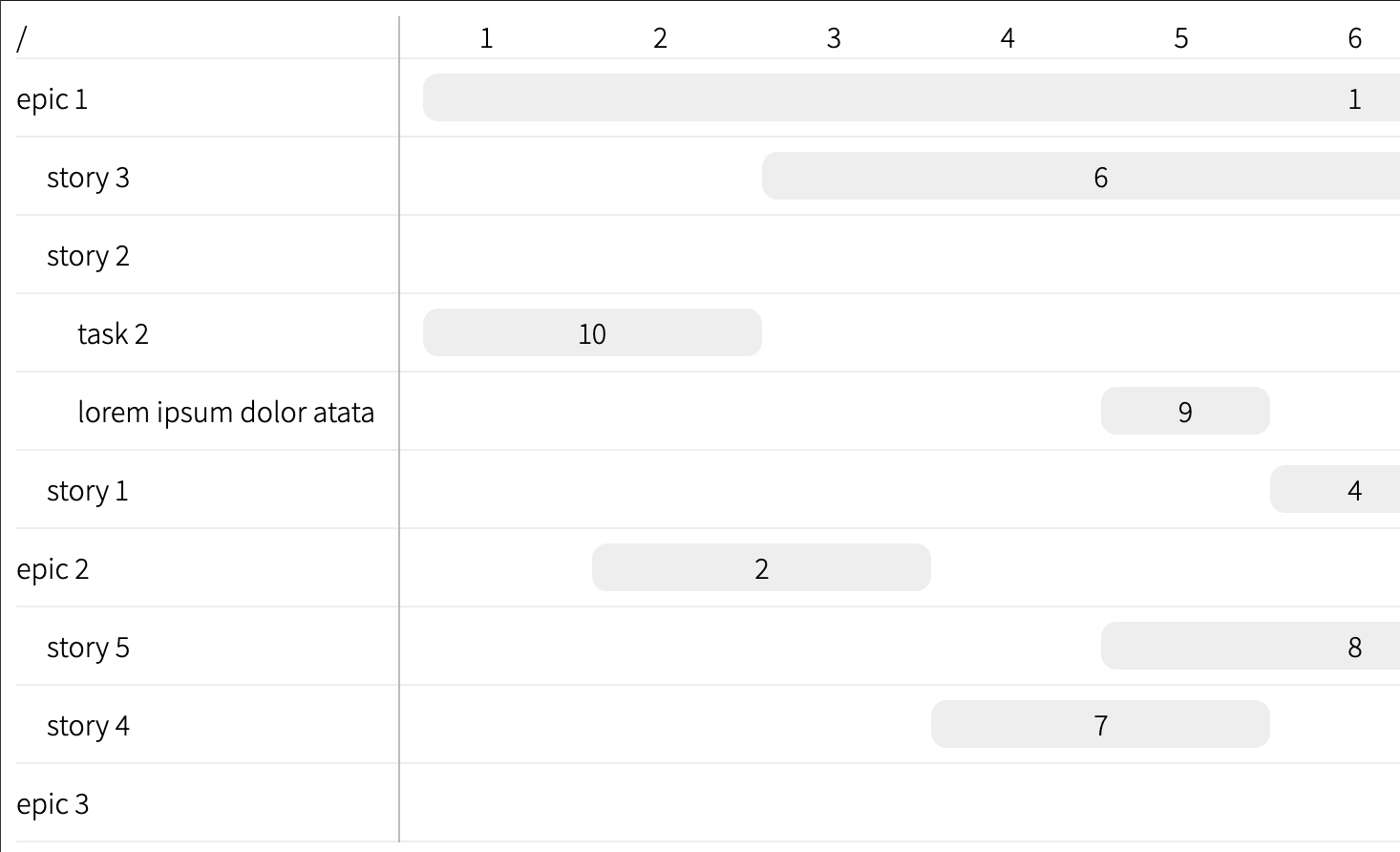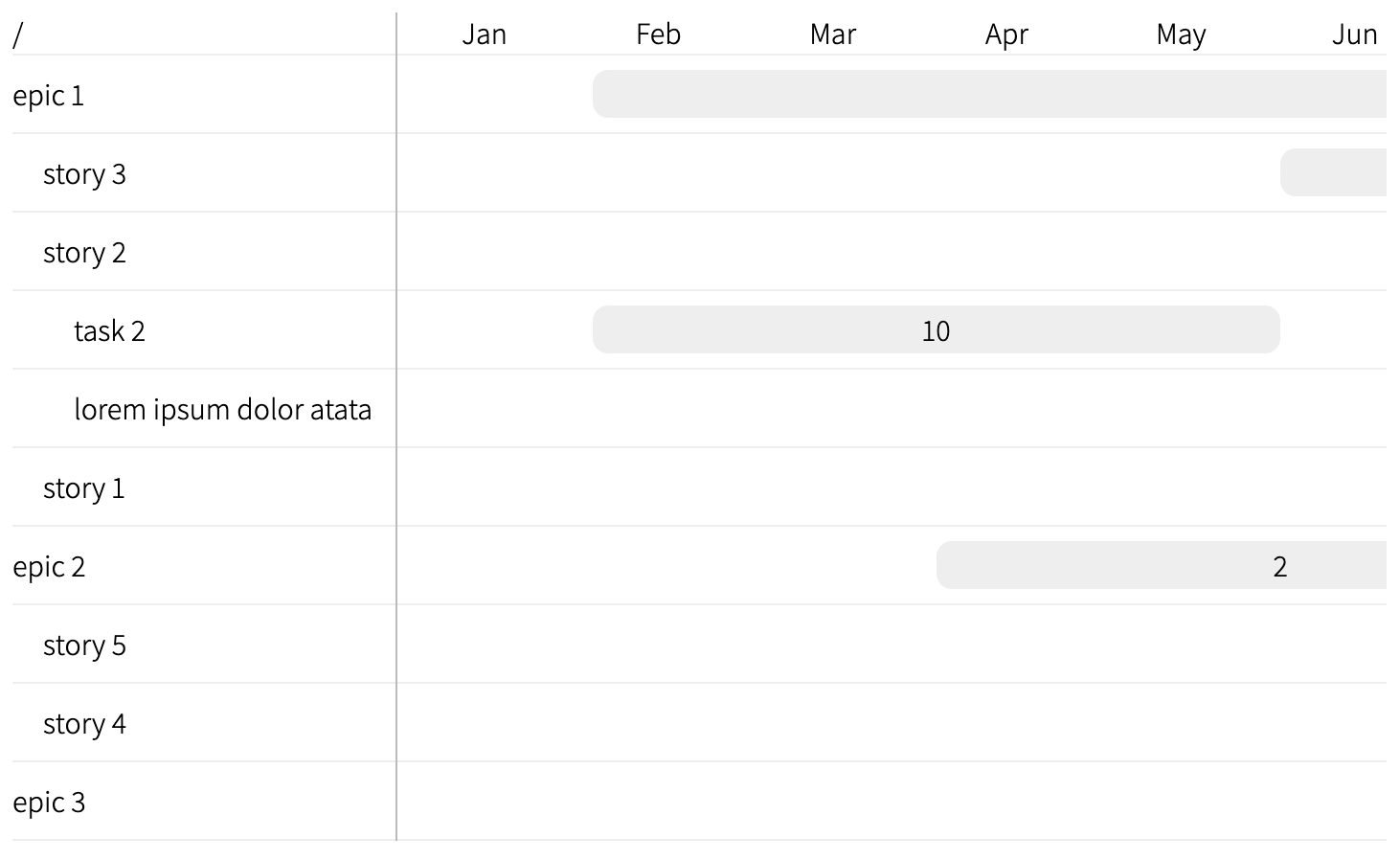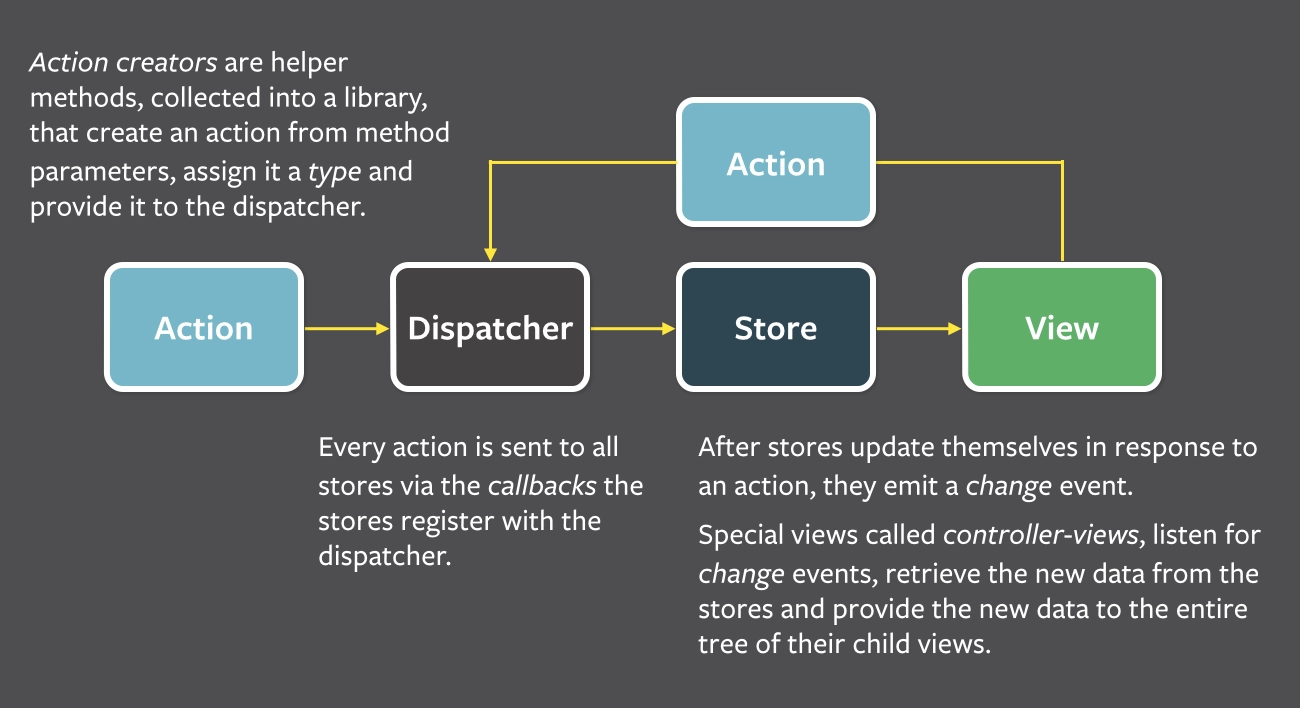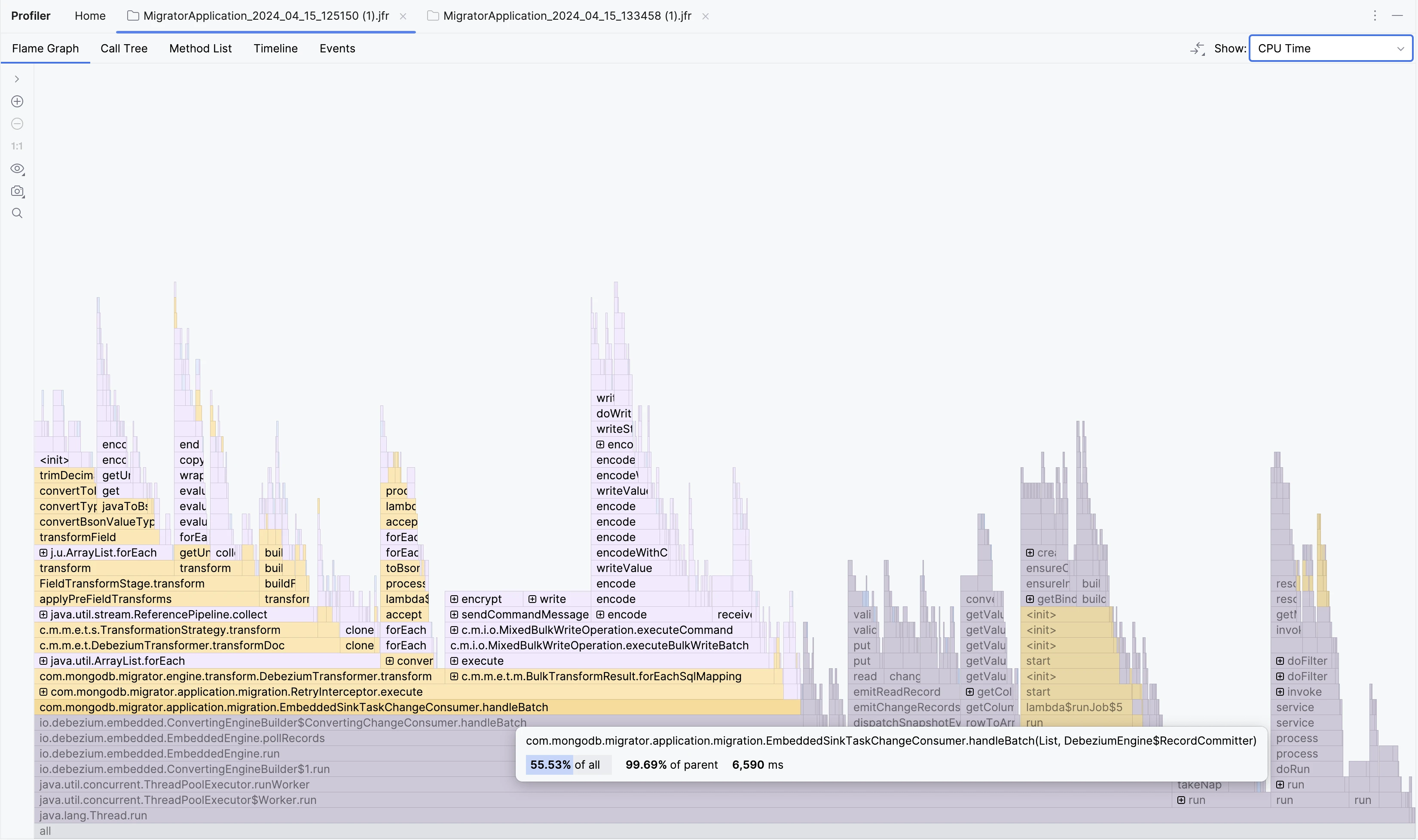Back in 2011 frontend was a very different thing - JavaScript had no class, Object.entries / Object.keys, promises were a proof of concept idea (unless you used 3rd party library bluebird) and Node was v0.10.
Then came CoffeeScript, which added nice helper features to JavaScript - list comprehensions, classes, string interpolation and if statements (meaning you could use them for variable assignment):
# if statements
text = if happy and knowsIt
chaChaCha()
else if sexy
knowsIt()
else if tooSexy
removeShirt()
else
showIt()
# list comprehensions
courses = [ 'greens', 'caviar', 'truffles', 'roast', 'cake' ]
menu = (i, dish) -> "Menu Item #{i}: #{dish}"
menu i + 1, dish for dish, i in courses
# ranges and list comprehensions
countdown = (num for num in [10..1])
# iterating over object entries
yearsOld = max: 10, ida: 9, tim: 11
ages = for child, age of yearsOld
"#{child} is #{age}"
Whilst it was still compiled to an inferior ES5 JavaScript, it helped to organise the code and make it substantially cleaner.
The one drawback is that it did not provide any type safety (only added recently, via @flow and you would still have to duplicate your classes if you wanted to use it - once in coffeescript and once in @flow annotations). Anyhow, CoffeeScript was a good tool for the task, if you ask me.
Then came Dart, Flow and TypeScript, which were also compiled to ES5 JavaScript,
but instead of adding new syntax features, they aimed to solve a different problem - by introducing types they sought to
reduce the number of runtime errors with type checks at compile time.
This sounded so good that many developers and companies immediately got on board. Alas, the new tech still suffered from the same issue as JavaScript itself and most common cause of runtime errors - the null and undefined still was a thing, causing the exact same runtime errors.
The one true benefit offered by TypeScript over the others was that it allowed to seamlessly use existing JavaScript code. And, provided you have the type signatures for that JavaScript code, it could even perform type checking on it too, effectively reducing the requirements for using TypeScript in the existing codebase. No wonder it was an easy buy-in for many projects.
Fast-forward to 2024 (twelve years since its first release) and TypeScript dominates the frontend world. Over the years it seems to have been focused on improving the type system in terms of what can you do with types - union types, partial types, etc. It still suffers from the original issues though and there still are not too many new syntactic features to pair with its powerful type system (like pattern matching).
With the new EcmaScript standards, classes and promises becoming the first-class citizens in all browsers (even Internet Explorer / Edge, when it was still around), the APIs and syntax became more mature (Object.entries, async / await to reduce callback hell, for .. of, const / let, string interpolation and many others). There are still no list comprehensions or conditional expressions / pattern matching though.
TypeScript still does help in what I think is a small subset of highly-specific scenarios like navigating the code (jump to definition / declaration / find usages) in the IDE and refactoring the code. But IDEs matured as well, code navigation is not as much of a feature unique to TypeScript anymore as it used to be (in the era of Sublime Text). TypeScript can prevent some really naive errors at compile time like using a number instead of an object, but I don't think developers run into them these days - because, again, IDEs are really powerful these days, even VSCode and they help eliminate such mistakes to a large degree.
Let's consider a real-world scenario (from my work project): server returns a list of LocationType objects. Each one of the objects can be either a Collection, a Document (in a specific collection) or a Table, each with its own subset of fields, specific to the type. We need to handle each case differently (display them on the UI differently).
The OpenAPI spec:
tableLocation:
type: object
required:
- table
properties:
table:
type: string
collectionLocation:
type: object
required:
- collection
properties:
collection:
type: string
documentLocation:
type: object
required:
- collection
- document
properties:
collection:
type: string
document:
type: string
location:
oneOf:
- $ref: "#/components/tableLocation"
- $ref: "#/components/collectionLocation"
- $ref: "#/components/documentLocation"
And the TypeScript code generated by OpenAPI for the above spec looks like this:
interface CollectionLocation {
collection: string;
}
interface DocumentLocation {
collection: string;
document: string;
}
interface TableLocation {
table: string;
}
function instanceOfCollectionLocation(value: object): boolean {
let isInstance = true;
isInstance = isInstance && "collection" in value;
return isInstance;
}
function instanceOfDocumentLocation(value: object): boolean {
let isInstance = true;
isInstance = isInstance && "collection" in value;
isInstance = isInstance && "document" in value;
return isInstance;
}
function instanceOfTableLocation(value: object): boolean {
let isInstance = true;
isInstance = isInstance && "table" in value;
return isInstance;
}
function CollectionLocationFromJSONTyped(json: any, ignoreDiscriminator: boolean): CollectionLocation {
if ((json === undefined) || (json === null)) {
return json;
}
return {
'collection': json['collection'],
};
}
function DocumentLocationFromJSONTyped(json: any, ignoreDiscriminator: boolean): DocumentLocation {
if ((json === undefined) || (json === null)) {
return json;
}
return {
'collection': json['collection'],
'document': json['document'],
};
}
function TableLocationFromJSONTyped(json: any, ignoreDiscriminator: boolean): TableLocation {
if ((json === undefined) || (json === null)) {
return json;
}
return {
'table': json['table'],
};
}
type JobLocation = CollectionLocation | DocumentLocation | TableLocation;
function JobLocationFromJSONTyped(json: any, ignoreDiscriminator: boolean): JobLocation {
if ((json === undefined) || (json === null)) {
return json;
}
return { ...CollectionLocationFromJSONTyped(json, true), ...DocumentLocationFromJSONTyped(json, true), ...TableLocationFromJSONTyped(json, true) };
}
This might be a bit too harsh on TypeScript as a language, considering this is not the best implementation (in my opinion), but this highlights one of the issues with TypeScript: this very same code caused a number of runtime errors caught by users - not exceptions, not compilation errors, but wrong UI behaviour - on the UI all locations were treated as a table location.
The reason why this was happening is the code itself - it does not really handle the choice type JobUpdateLocation correctly and instead of a choice type it returns a union type, to put it roughly - instead of oneOf it returns essentially allOf object.
Now, even if we were to rewrite it by hand (which would defeat the purpose of using OpenAPI and could be harder to keep in sync between client and server code), we would end up with something like this:
type CollectionLocation = {
collection: string;
}
type DocumentLocation = {
collection: string;
document: string;
}
type TableLocation = {
table: string;
}
function instanceOfCollectionLocation(value: object): boolean {
return ("collection" in value) && !("document" in value);
}
function instanceOfDocumentLocation(value: object): boolean {
return ("collection" in value) && ("document" in value);
}
function instanceOfTableLocation(value: object): boolean {
return ("table" in value);
}
function CollectionLocationFromJSONTyped(json: any): CollectionLocation | undefined {
if ((json === undefined) || (json === null)) {
return undefined;
}
return {
'collection': json['collection'],
};
}
function DocumentLocationFromJSONTyped(json: any): DocumentLocation | undefined {
if ((json === undefined) || (json === null)) {
return undefined;
}
return {
'collection': json['collection'],
'document': json['document'],
};
}
function TableLocationFromJSONTyped(json: any): TableLocation | undefined {
if ((json === undefined) || (json === null)) {
return undefined;
}
return {
'table': json['table'],
};
}
type JobLocation = CollectionLocation | DocumentLocation | TableLocation;
function JobLocationFromJSONTyped(json: any): JobLocation | undefined {
if ((json === undefined) || (json === null)) {
return undefined;
}
if (instanceOfCollectionLocation(json) && !instanceOfDocumentLocation(json) && !instanceOfTableLocation(json)) {
return CollectionLocationFromJSONTyped(json);
}
if (instanceOfDocumentLocation(json) && !instanceOfCollectionLocation(json) && !instanceOfTableLocation(json)) {
return DocumentLocationFromJSONTyped(json);
}
if (instanceOfTableLocation(json) && !instanceOfCollectionLocation(json) && !instanceOfDocumentLocation(json)) {
return TableLocationFromJSONTyped(json);
}
return undefined;
}
This is quite a verbose code, with few bad practices in place (the use of any and object, need to always be conscious of undefined), but this is literally what we ended up doing (the helpers, not redefining the types).
The types in TypeScript (or rather classes and interfaces) are also a point of a few confusing tricks you have to keep in mind - if we were to use class instead of type, as follows
class CollectionLocation {
constructor(public collection: string) {}
}
class DocumentLocation {
constructor(public collection: string, document: string) {}
}
class TableLocation {
constructor(public table: string) {}
}
we would eventually run into the similar bug at runtime, which is a perfectly valid behaviour from the perspective of TypeScript, because of type compatibility, meaning DocumentLocation and CollectionLocation could be used interchangeably, since they have a subset of compatible fields:
const a: CollectionLocation = new DocumentLocation('col', 'doc'); // ok
const b: DocumentLocation = new CollectionLocation('col'); // also ok
const c: TableLocation = a; // not ok
This would not work if CollectionLocation, DocumentLocation and TableLocation were types instead:
const a: CollectionLocation = { collection: 'col', document: 'doc' }; // not ok
const b: DocumentLocation = { collection: 'col' }; // not ok
const c: TableLocation = b; // not ok
And the code to parse location from JSON is actually quite ugly. It would benefit so much from switch expressions or pattern matching!
And we still have to remember to handle those potentially undefined values whenever we use the helper functions.
And here's an example from literally few days ago:
interface Job {
projectId: string;
}
const jobsInProgress: Job[];
const message = useProjectStatus(
jobsInProgress[0]?.projectId ?? ''
);
const useProjectStatus = (projectId: string) {
const { data } = useQuery({ queryFn: () => fetch(`/project/${projectId}`) });
return data;
};
The above code started throwing an error, since server responded with 500 Server Error. Reason was quite simple - the projectId, which we recently started to validate on the server (expecting it to be a valid ID), was a blank string. Interesting thing: no one has questioned the very line causing the "default value" for projectId to become an empty string:
jobsInProgress[0]?.projectId ?? ''
And issues like these are unbelievably common in front-end world, while being quite tricky to detect and resolve.
To fix this particular issue we added a client-side validation (to an extent) to run the query only when the projectId value is provided:
useQuery({
enabled: !!projectId,
queryFn: () => fetch(`/project/${projectId}`)
})
The problem remains: it is really easy to miss this rather small fallback to an empty string.
There is a solution in Scala world that somewhat addresses this issue - refined types, which allows to have something along the lines of:
import eu.timepit.refined.*
import eu.timepit.refined.api.Refined
import eu.timepit.refined.string.*
type NonBlankString = MatchesRegex[".+"]
def useProjectStatus(projectId: String Refined NonBlankString) = ???
This would require wrapping all the values passed to fetchData in refineV[NonBlankString]() call and handling the case when the validation fails:
def generateId(): String = List("some", "").last
def fetchData(id: String Refined NonBlankString) = println(s"fetching '$id'...")
def main(args: Array[String]) = {
for {
id <- refineV[NonBlankString](generateId())
} yield fetchData(id)
}
But in the land of TypeScript, there is only so much you can do - TypeScript only works at compile time.
The above examples might sound like very far-fetched edge case scenarios, but keep in mind: this is the code generated automatically by one of the most popular tools from a trivial schema. This is not as far-fetched as it might seem.
Can we do better in TypeScript? Something like refined in Scala? What if we had a powerful type system and syntax to support it? And, if possible, get rid of the null and undefined along the way?
The problem of null and undefined can be mitigated to an extent by using some concepts of functional programming, similarly to how I showcased some time ago. It would be quite hard to achieve, though, given the problem remains imbued in the language itself. Moreover, targeting the issues described above, it would take an entire standard library to really reduce the possibility of the issue:
const jobInProgressMaybe: Maybe<Job> = new List<Job>(jobsInProgress).first();
const projectIdMaybe: Maybe<string> = jobInProgress.map(j => j.projectId);
useQuery({
enabled: projectIdMaybe.isSome(),
queryFn: () =>
projectIdMaybe
.flatMap(projectId => fetch(`/project/${projectId}`))
.orElse(Promise.reject('no projectId'))
})
We could try to address the empty string issue with the extensive type system:
type NonEmptyString<T extends string> = '' extends T ? never : T;
type MyString<T extends string> = T;
function fetchData<T extends string>(id: NonEmptyString<T>) {
console.log(`Fetching ${id}`);
}
But it would only work if all the values are known at compile time, which is easily broken with the simplest test:
function generateId(): NonEmptyString<string> {
return ['moo', ''][1] as NonEmptyString<string>;
}
fetchData(''); // not ok
fetchData(generateId()); // ok, but guaranteed undefined behaviour at runtime
And it would take even more effort to make all types uniquely identifiable (to solve the choice type problem).
The way most developers would approach solving similar issues in a real-world project would be (at best) adding some linters, checkers and relying on automated tests and high-quality code reviews. In my experience, this is a rather flimsy excuse rather than a real solution and it does not work most of the time - especially in edge case scenarios.
This is where I'd suggest to use another language altogether, which, similarly to CoffeeScript and TypeScript back in the day, solved some problems at compile time. And suggest I will.
There is a big warning before I proceed though: another technology is a rather big decision, not to be taken lightly. Some might see it as an impossible switch, only few small or indie developers on rather unimportant projects would make. But remember it was the same story with ES6, TypeScript, bundlers and pretty much any significant upgrade in the past.
Balance bike is a good tool to get you going - it gets you from walking to moving fast. But if you want to get faster and further, you have to drop it at some stage in favour of a more advanced bike.
Similarly to how TypeScript and ESNext got you from plain callback-hell-infested JavaScript code to a better place - you can refactor code faster, it saves you from a few errors at compile time, the code is much cleaner and conscise now. But if you really want to get even further, you will have to make a leap of faith, make an investment into the future.
Here is my big controversial suggestion: a pure functional language, one with strong type system, which does not have a concept of null and undefined in the first place, with a nice sweet syntax.
Before landing on a specific choice, check out Elm (dead, but a good starting point) and PureScript, in that order. Let me explain.
Elm is like a very simplified Haskell - it is a pure functional language with a subset of Haskell syntax. It has a nice compiler with really good error messages. It enforces a structure for your application (redux-like). It gives you a gentle introduction to the functional programming concepts and it targets browsers (web applications). With its architecture, you can look at the message (action from redux) type and see exactly what are all possible operations in the application (which makes reading code and getting to know new codebases much easier).
On a bad note, it is not being developed since 2019, it comes with an entire runtime (saves you from runtime errors, but blows up the bundle size) and it is a all-or-nothing commitment for the project - it is an all-in-one platform and if you want to gradually update your application from React - sorry, you will have to rewrite entire parts of you application entirely in Elm. The good point turned bad, having all possible actions defined in one message type make complex applications really complex (with one massive type definition, an issue very familiar to developers who had to deal with Redux).
here could have been an Elm code sample
The next step on this journey would be PureScript. It is an actively developed language, it has a minimal footprint after compiled to JS (much smaller than Elm), it has a very rich ecosystem and, best of all, it has a very simple interop with JS and it can compile just one module. Top it up with Halogen framework and you effectively got yourself Elm on steroids. The downside is that it is slightly more complex platform (language and framework) compared to Elm, so the learning curve is a bit steeper.
The above example of CoffeeScript code could be written in plain PureScript like this:
foreign import happy :: Boolean
foreign import knowsIt :: Boolean
foreign import sexy :: Boolean
foreign import tooSexy :: Boolean
foreign import chaChaCha :: String
foreign import knowsItStr :: String
foreign import removeShirt :: String
foreign import showIt :: String
import Data.Array ((..), mapWithIndex)
import Data.Map as M
import Data.Tuple (Tuple(..))
-- if statements with multiple branches become pattern matching
text
| happy && knowsIt = chaChaCha
| sexy = knowsItStr
| tooSexy = removeShirt
| otherwise = showIt
-- list comprehensions become function application
courses = [ "greens", "caviar", "truffles", "roast", "cake" ]
-- string interpolation is possible via an external packages
-- https://pursuit.purescript.org/packages/purescript-interpolate
import Data.Interpolate as I
menu' i dish = I.i "Menu Item " i ": " dish
-- https://pursuit.purescript.org/packages/purescript-template-strings
import Data.TemplateString.Unsafe ((<~>))
menu'1 i dish = "Menu Item ${i}: ${dish}" <~> { i: i, dish: dish }
import Data.TemplateString ((<->))
import Data.Tuple.Nested ((/\))
menu'2 i dish = "Menu Item ${i}: ${dish}" <-> [ "i" /\ i, "dish" /\ dish ]
-- pure PureScript string interpolation
menu i dish = "Menu Item " <> (show i) <> ": " <> dish
x i dish = menu (i + 1) dish
-- can not just call a function and ignore its result
x' = mapWithIndex x courses
-- ranges become Array monad
-- countdown :: Array Int
countdown = do
num <- 10 .. 1
pure num
-- JavaScript objects exist in a separate package
import Foreign.Object as FO
yearsOld' = FO.fromHomogeneous { max: 10, ida: 9, tim: 11 }
-- object as Map
yearsOld = M.fromFoldable [Tuple "max" 10, Tuple "ida" 9, Tuple "tim" 11]
y child age = (show child) <> " is " <> (show age)
ages = map y yearsOld
ages = map y yearsOld'
The real deal with this approach is how to migrate from an existing (most likely) React/TypeScript/(webpack | vite) ecosystem to PureScript?
Expanding on Scott Wlaschin's talk, you can (and probably should) separate the pure application logic from IO, potentially utilising the foreign imported functions to interact with the existing JS code (libraries). This way you keep your application logic error-free, and all the errors that can happen are shifted towards the presentation layer (MVC/MVP, remember this concept?).
This would be the best strategy for the most projects, migrating one bit at a time and making the application less and less error prone whilst not wreaking the havok by rewriting everything from scratch (very few businesses will buy into that).
The bigger issue is that most modern frontend apps I have seen are so mangled in mixing the business logic and the presentation layer, it would be challenging (to say the least) to unmangle it back to a reasonable code. Check how we handle UI action, triggering a HTTP request and updating both the UI (to display the request progress/status) and the application state (for other parts of the UI) at the same time.
here could have been a real-world application interaction handling code sample
Calling PureScript code from JavaScript (based on FFI example in PureScript book):
module Test where
import Prelude
gcd :: Int -> Int -> Int
gcd 0 m = m
gcd n 0 = n
gcd n m
| n > m = gcd (n - m) m
| otherwise = gcd (m - n) n
data ZeroOrOne a = Zero | One a
inc :: ZeroOrOne Int -> ZeroOrOne Int
inc Zero = Zero
inc (One n) = One (n + 1)
_zero = Zero
_one = One 1
_two = One 2
and then in JS:
import Test from 'Test.js';
Test.gcd(15)(20);
const _zero = new Test.Zero();
const _one = new Test.One(1);
const _two = new Test.One(2);
console.log(Test.inc(_zero));
console.log(Test.inc(_one));
console.log(Test.inc(_two));
In the other direction (calling JS code from PureScript):
export const setItem = key => value => () =>
window.localStorage.setItem(key, value);
export const getItem = key => () =>
window.localStorage.getItem(key);
and then in PureScript:
foreign import setItem :: String -> String -> Effect Unit
foreign import getItem :: String -> Effect Json
import Data.Argonaut (class DecodeJson, class EncodeJson)
import Data.Argonaut.Decode.Generic (genericDecodeJson)
import Data.Argonaut.Encode.Generic (genericEncodeJson)
import Data.Generic.Rep (class Generic)
-- define PhoneType
derive instance Generic PhoneType _
instance EncodeJson PhoneType where encodeJson = genericEncodeJson
instance DecodeJson PhoneType where decodeJson = genericDecodeJson
processItem :: Json -> Either String Person
processItem item = do
jsonString <- decodeJson item
j <- jsonParser jsonString
decodeJson j
main = do
item <- getItem "person"
initialPerson <- case processItem item of
Left err -> do
log $ "Error: " <> err <> ". Loading examplePerson"
pure examplePerson
Right p -> pure p
To align this with the original problem about JobLocation, here's how this would look like in PureScript:
module Main where
import Prelude
import Data.Argonaut (jsonParser)
import Data.Argonaut.Decode (decodeJson, (.:), printJsonDecodeError)
import Data.Argonaut.Decode.Class (class DecodeJson)
import Data.Argonaut.Decode.Error (JsonDecodeError(..))
import Data.Argonaut.Encode (encodeJson, (:=), (~>))
import Data.Argonaut.Encode.Class (class EncodeJson)
import Data.Bifunctor (bimap)
import Data.Either (Either(..))
import Data.Generic.Rep (class Generic)
import Data.Show.Generic (genericShow)
import Effect (Effect)
import Effect.Console (log)
data JobLocation
= CollectionLocation { collection :: String }
| DocumentLocation { collection :: String, document :: String }
| TableLocation { table :: String }
derive instance Eq JobLocation
derive instance Generic JobLocation _
instance showJobLocation :: Show JobLocation where
show a = genericShow a
instance DecodeJson JobLocation where
decodeJson json = do
obj <- decodeJson json
-- Check which fields are present
maybeCollection :: Maybe String <- obj .:? "collection"
maybeDocument :: Maybe String <- obj .:? "document"
maybeTable :: Maybe String <- obj .:? "table"
let hasCollection = isJust maybeCollection
let hasDocument = isJust maybeDocument
let hasTable = isJust maybeTable
case hasCollection, hasDocument, hasTable of
true, true, false -> do
collection <- obj .: "collection"
document <- obj .: "document"
pure $ DocumentLocation { collection, document }
true, false, false -> do
collection <- obj .: "collection"
pure $ CollectionLocation { collection }
false, false, true -> do
table <- obj .: "table"
pure $ TableLocation { table }
_, _, _ -> Left $ AtKey "structure" $ UnexpectedValue json
parseJobLocation :: String -> Either String JobLocation
parseJobLocation jsonStr = jsonParser jsonStr >>= (decodeJson >>> bimap printJsonDecodeError identity)
-- Example usage
examples :: Effect Unit
examples = do
let collectionJson = """{"collection": "users"}"""
case parseJobLocation collectionJson of
Left err -> log $ "Collection parse error: " <> err
Right location -> do
log $ "Parsed CollectionLocation: " <> show location
let documentJson = """{"collection": "users", "document": "user123"}"""
case parseJobLocation documentJson of
Left err -> log $ "Document parse error: " <> err
Right location -> do
log $ "Parsed DocumentLocation: " <> show location
let tableJson = """{"table": "analytics"}"""
case parseJobLocation tableJson of
Left err -> log $ "Table parse error: " <> err
Right location -> do
log $ "Parsed TableLocation: " <> show location
let invalidJson = """{"data": "something"}"""
case parseJobLocation invalidJson of
Left err -> log $ "Expected error: " <> err
Right location -> log $ "Unexpected success: " <> show location
main :: Effect Unit
main = do
examples
While this code is type safe and will handle all of the edge cases just perfectly, I find it pretty hard to read.
Parts that I would be unable to understand in a month of not working with this code, like this one:
parseJobLocation jsonStr = jsonParser jsonStr >>= (decodeJson >>> bimap printJsonDecodeError identity)
It could be rewritten in an imperative way:
parseJobLocation jsonStr = do
json <- jsonParser jsonStr
bimap printJsonDecodeError identity (decodeJson json)
But I doubt this makes it any more readable - the bimap printJsonDecodeError identity (decodeJson json) part, specifically.
This is a common issue with Haskell and PureScript - some of the functions are weirdly named and can only be understood either with experience or by reading the docs (which, in turn, are also quite cryptic).
Take the bimap function for example. Its signature looks like this:
bimap :: forall a b c d. (a -> b) -> (c -> d) -> f a c -> f b d
This does not really help non-seasoned Haskeller.
The docs only say this:
The bimap function maps a pair of functions over the two type arguments of the bifunctor.
I had to use it since there are two function calls in parseJobLocation: jsonParser :: String -> Either String Json and decodeJson :: Json -> Either JsonDecodeError a.
This means if you just pipe the output of the first to the second (jsonParser jsonStr >>= decodeJson), the return type should match - because of the nature of the >>= operator: >>= :: (b -> c) -> m a b -> m a c, meaning for Either a b and a function b -> c the return type would have to be Either a c, in our case (Json -> a) -> (Either String Json) should return Either String a, but decodeJson returns Either JsonDecodeError a instead. Effectively, >>= operates on the second argument of a functor (in case of Either a b, operator >>= changes b), whereas we want to change it first and then change the first argument as well (making the chain Either String Json -> Either JsonDecodeError a -> Either String a). But this has to be done in one go - or, rather, in one argument of >>=. We can create such function by combining decodeJson which returns Either JsonDecodeError a and another function, which converts that middle argument, JsonDecodeError into String, making it Either String a. We achieve this by using the >>> operator which is an alias for composeFlipped and is defined as composeFlipped :: a b c -> a c d -> a b d. In fact, instead of using bimap _ identity _ it is better to use lmap _ _ which would only apply function to the left side of Either:
parseJobLocation jsonStr = do
json <- jsonParser jsonStr
lmap printJsonDecodeError (decodeJson json)
Explanations like those make it a huge barrier to entry for newcomers.
Incorporating the above solution in an existing TypeScript project might look a tad cumbersome.
For Vite, there is a PureScript plugin:
import { defineConfig } from 'vite';
import purescript from 'vite-plugin-purescript';
export default defineConfig({
plugins: [
// ...
purescript(),
],
});
The tricky part is that we have to re-define types in TypeScript:
type CollectionLocation = { collection: string };
type DocumentLocation = { collection: string; document: string };
type TableLocation = { table: string };
type JobLocation = CollectionLocation | DocumentLocation | TableLocation;
Moreover, since the function returns an Either, we would need that one too:
interface Left<E> {
readonly _tag: 'Left';
readonly value0: E;
}
interface Right<A> {
readonly _tag: 'Right';
readonly value0: A;
}
type Either<E, A> = Left<E> | Right<A>;
And then importing the function and calling it from TypeScript:
import { parseJobLocation } from '../output/JobLocation';
const loc = parseJobLocation('{ "collection": "col", "document": "doc" }');
if (loc._tag === 'Right') {
// ...
}
Quite the bother, right? That's why it is most beneficial if the entire critical section can be written in PureScript entirely.
In my case, the JobLocation is used for displaying a corresponding UI element (in React), so there's little benefit at a cost of lots of boilerplate and not the best experience defining those parsers.
I personally prefer Scala 3 implementation (not the integration with TypeScript part though, just the JSON parser implementation):
import io.circe.*
import io.circe.parser.*
import cats.implicits.*
import cats.effect.{IO, IOApp}
import io.circe.generic.semiauto.*
enum JobLocation:
case CollectionLocation(collection: String)
case DocumentLocation(collection: String, document: String)
case TableLocation(table: String)
object JobLocation:
given Decoder[DocumentLocation] = deriveDecoder
given Decoder[CollectionLocation] = deriveDecoder
given Decoder[TableLocation] = deriveDecoder
object JobLocationApp extends IOApp.Simple:
import JobLocation.*
def parseJobLocation(jsonString: String): Either[Error, JobLocation] =
parse(jsonString).flatMap { json =>
json.as[TableLocation].widen[JobLocation] orElse
json.as[DocumentLocation].widen[JobLocation] orElse
json.as[CollectionLocation].widen[JobLocation]
}
def run: IO[Unit] =
val testCases = List(
"""{"collection": "users"}""",
"""{"collection": "orders", "document": "order-123"}""",
"""{"table": "analytics"}""",
"""{"invalid": "data"}"""
)
testCases.traverse_ { jsonStr =>
parseJobLocation(jsonStr) match
case Right(location) =>
IO.println(s"Parsed: $jsonStr -> $location")
case Left(error) =>
IO.println(s"Failed to parse: $jsonStr -> ${error.getMessage}")
}
This is a really straightforward implementation in my opinion. In this example, the parsing is literally boiled down to "try parsing TableLocation and if it returns Left, try parsing DocumentLocation instead, and if that returns Left, try parsing CollectionLocation, otherwise return what you got".
Alternatively, circe, the JSON parsing library for scala-cats used in the example above, provides an even neater way:
object JobLocation:
given Decoder[DocumentLocation] = deriveDecoder
given Decoder[CollectionLocation] = deriveDecoder
given Decoder[TableLocation] = deriveDecoder
given Decoder[JobLocation] =
summon[Decoder[TableLocation]].widen[JobLocation] or
summon[Decoder[DocumentLocation]].widen[JobLocation] or
summon[Decoder[CollectionLocation]].widen[JobLocation]
def parseJobLocation(jsonString: String): Either[Error, JobLocation] =
parse(jsonString).flatMap(_.as[JobLocation])
In this code, the parser for the parent type, JobLocation is defined as a combined parser of whichever case class manages to get parsed first:
summon[Decoder[TableLocation]].widen[JobLocation] or
summon[Decoder[DocumentLocation]].widen[JobLocation] or
summon[Decoder[CollectionLocation]].widen[JobLocation]
Just to reiterate, I do understand that converting the application (and developers) to this new weird technology is an almost impossible task, especially in a large long-lived project. One way to reason about it and justify the transition is the resilience requirements of a project (the need for actually error-prone code) and the amount of time and effort spent to date on finding and fixing those nasty bugs and undefined behaviours in an application.






